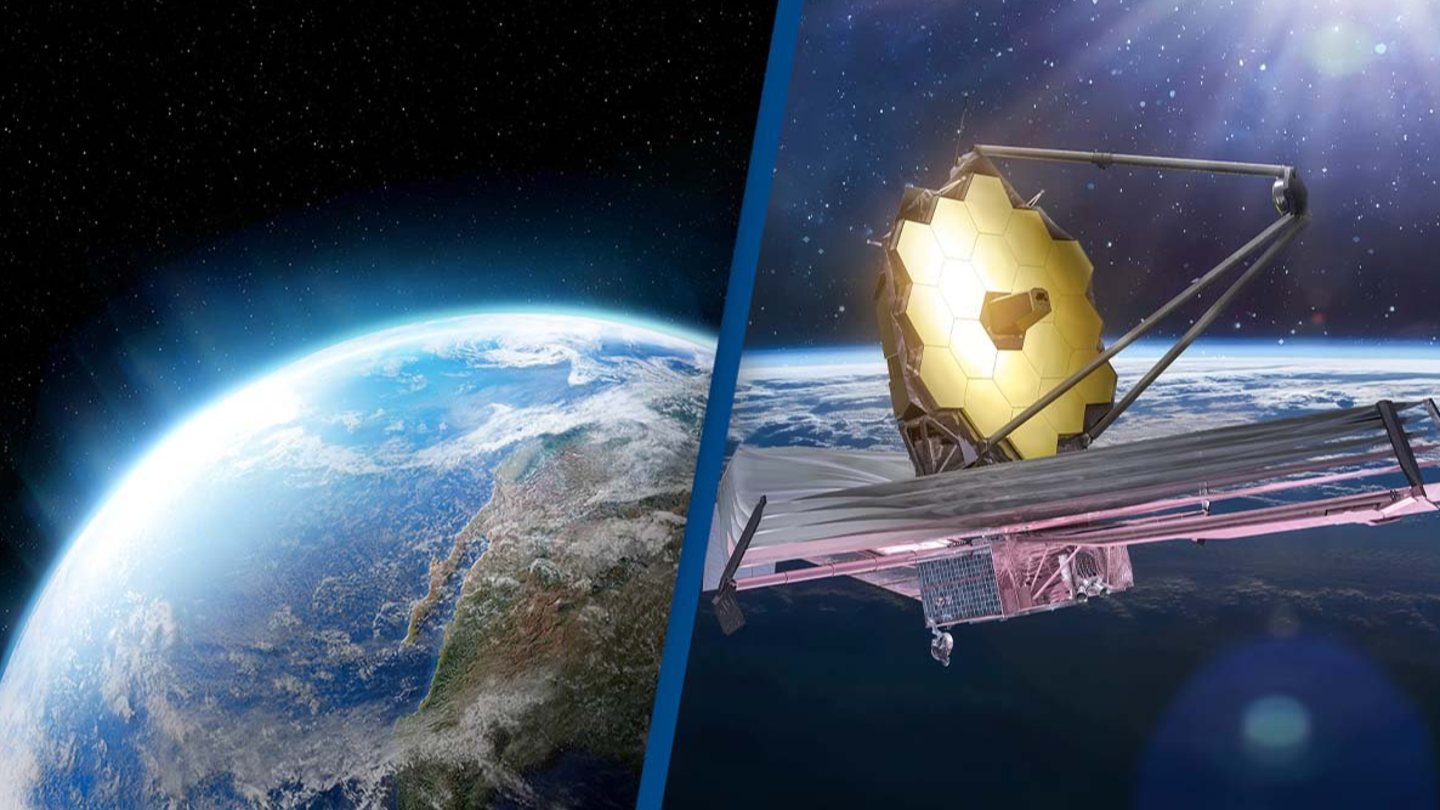Science
Related: About this forumNASA discovered a planet twice as big as Earth with a gas that is 'only produced by life'
NASA's James Webb Telescope picked up a 'possible detection' of a molecule which 'on Earth is only produced by life'
Poppy Bilderbeck
Updated 19:00 26 Apr 2024 GMT+1
Published 19:01 26 Apr 2024 GMT+1

Featured Image Credit: Getty Stock Images
An exoplanet has been found by NASA which is '8.6 times' as big as Earth with a gas present that's produced mainly by life.
NASA's James Webb Space Telescope was launched on 25 2021 on an Ariane 5 rocket from Europe's Spaceport in French Guiana in South America and last year, it made a very exciting discovery.
The planet
An exoplanet called K2-18 b - also known as EPIC 201912552 b - orbits the red dwarf K2-18 in what NASA says is a 'habitable zone'.
It's located 124 light years away from earth and is around 2.6 times the radius of Earth and 8.6 times the mass of Earth.
It was first discovered by NASA's Kepler space telescope which launched in 2009, however, during the Webb Telescope's mission, the planet's atmosphere was looked into more closely.
The findings
Last year, it was discovered K2-18b has a 'presence of carbon-bearing molecules including methane and carbon dioxide' - NASA revealed.
More:
https://www.unilad.com/technology/nasa/nasa-planet-twice-size-earth-methane-gas-398351-20240426
paleotn
(17,994 posts)Imagine how strong they are at ~30% higher gravity than earth. And our best would be couch potatoes in their Olympics. Gravity is such a drag
dchill
(38,583 posts)My starship is in the shop - what about Uber?
KS Toronado
(17,402 posts)
Arne
(2,127 posts)Farmer-Rick
(10,222 posts)What a life form with such a high gravity would look like.
muriel_volestrangler
(101,400 posts)Gravitational force is proportional to the mass, and inversely proportional to the square of the distance (from the centre of mass). So it's 8.6/(2.6*2.6)=1.3 times as strong as our gravity. That's felt by something on a solid surface in a gaseous atmosphere, of course; in water, if you're something that basically floats, it makes no difference.
But it would basically have little effect - things might not be able to grow quite as tall, run as fast, and so on (limits on what stresses legs can stand before they break too often, that kind of thing). If they had a different chemistry (eg not calcium-based bones) it might make more of a difference.
Farmer-Rick
(10,222 posts)It would be interesting to see.
AllaN01Bear
(18,634 posts)
run.space 1999 fans know this .
Fla Dem
(23,823 posts)K2-18 b is located 124 light-year from earth. One (1) light year is about 6 trillion US (statute) miles.
What Is a Light-Year? | NASA Space Place –
For most space objects, we use light-years to describe their distance. A light-year is the distance light travels in one Earth year. One light-year is about 6 trillion miles (9 trillion km).
So at 124 light years away from earth and one (1) light year is 6 trillion miles, the planet is 744 trillion miles from Earth.
ColinC
(8,346 posts)That would put your visit only about half a millennium away!
Farmer-Rick
(10,222 posts)Hard to imagine. Thanks for setting it out.
Joinfortmill
(14,489 posts)SunSeeker
(51,777 posts)DFW
(54,465 posts)A planet making enough methane that it supports twenty billion cows the size of wooly mammoths. The cattle industry is probably in talks with Elon Musk as we speak about how to market all that fresh, cheap organic beef here on earth. With all the methane (speculating on that), no one will have to worry about fueling the trip home—as long as the local Navi don’t mind sharing their food source.
BWdem4life
(1,710 posts)With a breathable atmosphere. Where are all those ones?